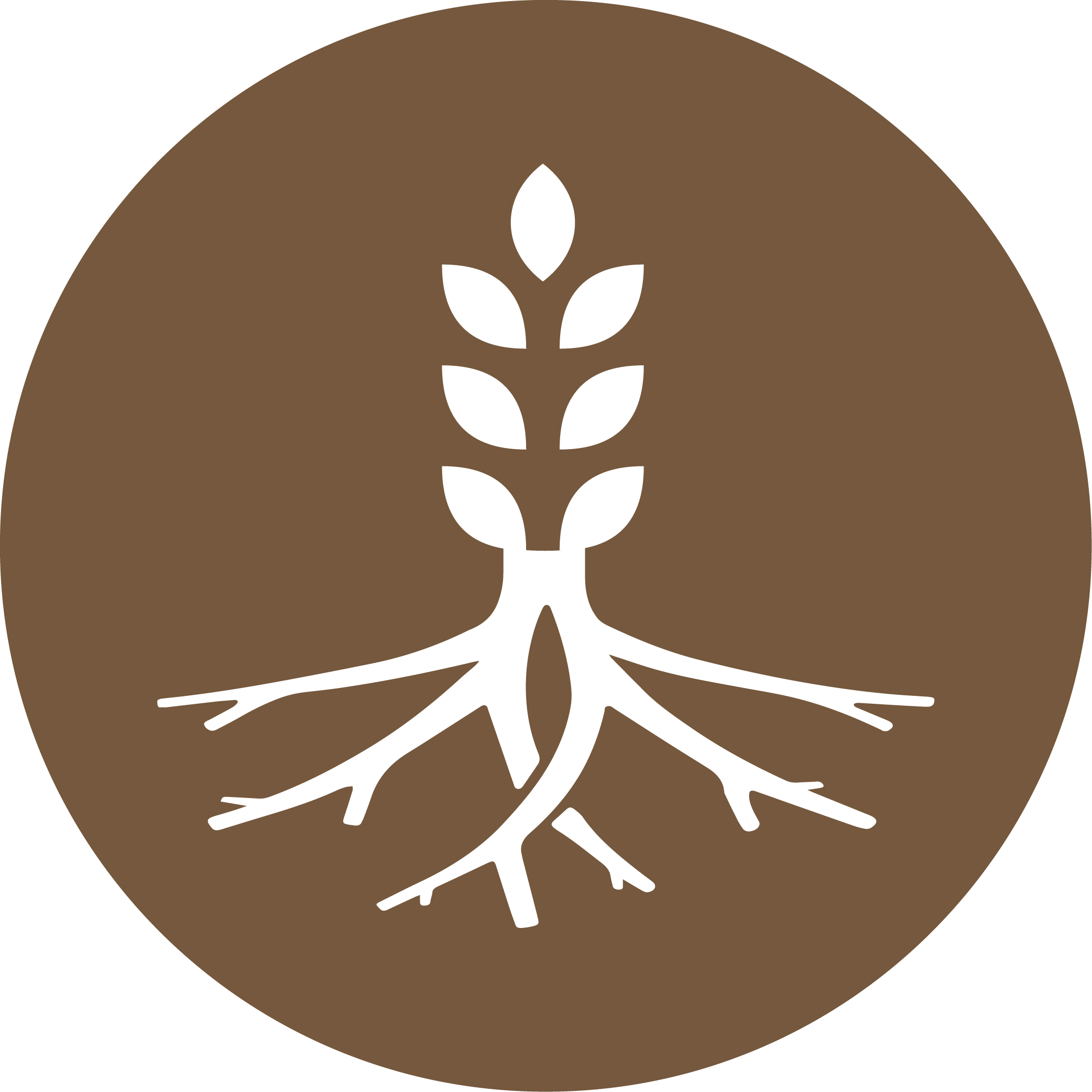On a quest to make their organic seed business as sustainable and productive as possible, Smales Organic Seeds has been putting both varieties and biostimulant seed treatments through their paces to help secure stronger establishment and unlock genetic yield potential in organic crops.
Farming 279ha at Thornton Farm near Berwick-upon-Tweed in Northumberland, Anna Pearce is in charge of both the farm and seed side of the business, which operates as a commercial farm as well as producing premium organic cereal and pulse seed which Smales then process, certify and sell on to other farmers and merchants.
Key Points:
- It’s crucial to get seed growing well
- Weed woes in organic seed crops challenging
- A variety of control controls are vital
- Organic seeds grown into good seedbeds is crucial
- Biostimulants have a role to play
- Newton biostimulant seed treatment looked slightly stronger
- Additional 0.54 t/ha with Newton worth an extra £146/ha
It’s crucial to get seed growing well
A strong advocate of trials and optimising every tool within her organic system, Anna is utilising the full suite of cultural options available to help get seed growing well. This includes making full use of clover leys, vigorous varieties, grazing sheep to aid fertility and numerous mechanical weeders to take out competitive weeds that otherwise would swamp the crop and the combine.
“We operate a six-year rotation, with two years of clover, two years of cereals, one year of beans and finally another year of cereals,” explains Anna. “We’ll grow either a white or red clover ley, in alternating rotations and we also intersow this with mustard as a sacrificial crop for beetles, as they seem to prefer it when they are small.”
By renting the clover ley ground out to a local sheep farmer for grazing, it helps mow the weeds and adds organic matter to the soils, she adds. “We split the clover fields in half so that the sheep graze one side of the field for two weeks and then they are moved to the other side for another two weeks.


“Moving them around gives us a chance to control things like thistles and gives the clover a break to regrow, ensuring that it is not eaten down too hard and hopefully resulting in more nitrogen fixing. A sort of dumbed down mob grazing for arable farmers. This is key to building fertility in our soils for the cereal crops that follow.”
In year three of the rotation, either winter wheat or spring barley is grown – with varieties chosen for their untreated yield potential and their disease resistance, continues Anna.
“We don’t grow anything with a disease rating score of below 5 on the Recommended List. KWS Extase for Group 1 and Revelation for Group 4 have performed well here in recent years. With the spring barley, both us and our customers like Westminster which we’ve grown for many years as it’s got good disease resistance, is quite tall and quite reliable also.
“In year five we grow beans and then winter oats in year six – Mascani winter oats and spring oats. Oats are tall and good at competing with weeds, without being too nitrogen hungry. They are also a good crop to undersow.”
Weed woes in organic seed crops challenging
Every business has its challenges, and Anna says weed control is her biggest issue on farm. “Weeds are our biggest agronomic problem, competing with our growing crops,” she says. “I guess you could argue that weeds add biodiversity, and while I love nature, there needs to be a balance somewhere.
“Over the years, we’ve had terrible difficulty trying to control docks in certain fields. Couch grass and charlock can also be fairly prolific and we have a bit of creeping thistle too.”
Anna says that she has tried a number of methods to help control some of the most problematic populations. “In recent years we’ve gained a population of green dock beetles that lay their eggs on the dock leaves, and then the larvae hatch and eat the leaves, reducing the docks to nothing. It’s natural predation at its best and this has helped reduce our dock seed population.”
A variety of cultural controls are vital
In terms of mechanical weeders, Anna has a variety of tools which she utilises through the growing season to reduce weeds competing for water and nutrients from the crop. “We use a CMN couch grass killer which cultivates up the soil leaving weed roots on the soil surface to die, either via frost or the sun dries them out. It works well on rooty weeds such as docks and couch grass. By subsoiling, creeping thistle populations can also be reduced” she adds.
She also makes use of a couple of cutting tools – including the Combcut and CTM Weed Surfer, with the Combcut being employed early in the season followed by the Weed Surfer.
Ideally suited for the control of charlock and docks, the Combcut – which was developed by an organic Swedish farmer – essentially enables selective weed cutting in a growing crop, explains Anna. “It has an angled row of knives mounted on a steal beam which sits on the front of the tractor. Down in a cereal it glides through, combs and cuts the stemmier weeds leaving the flopping cereal leaves unharmed.
“We’ll then use the Weed Surfer later in the season when the weeds are sticking out above the crop. It’s essentially a 9m cutting mower with four rotors on the front of the tractor which helps tackle established weeds like the charlock, couch and thistle in our cereals and bean crops.”


Organic seeds sown into good seedbeds is crucial
How crops are established also has a big impact on the overall weed picture, and Anna says that organic seed crops sown into good seedbeds is crucial.
This is where cultivations are key on the farm’s sandy clay loam soils, and typical tools of choice are either the plough combi to aid weed seed burial, or the Horsch Terrano combi drill where ploughing is not needed. When ploughing, we try to plough shallow & just before drilling to minimise the impact on the soil. “We’ve tried min-till but saw a significant yield drop in our trial. We need to continue to try it, but changing your drill can have a big impact on your yields and therefore business,” explains Anna.
While soil health may be taking a bit of a hit with the heavy machinery, adding hen muck and green composted waste help feed the soils and build organic matter. Cereal and bean straw is also chopped after harvest, which is then incorporated back in, adding further nutrients. “We buy in about 280 tonnes of hen muck a year and apply as a top dressing to winter crops in April and put on fields in February destined for spring cropping and cultivate in.
“Our organic matter levels are at 4.5% on average which I think is pretty good, though we’re still working to build on that,” adds Anna. “We also rotationally put on basalt rock at 20t/ha to help feed soils, worms and adjust pH.
“We enjoy experimenting and trying to find new ways to benefit our growing system and maximise our yields and outputs as much as we can.”
Biostimulants have a role to play
It’s with this in mind that Anna started looking at the effects of biostimulants, as well as her interest in always seeking out new solutions to push yield. “I see biostimulants offer a huge opportunity to push yield which would give me more seed to sell and ultimately aid the profitability of our business.
“I’m part of the European H2020 Ecobreed Project – a European project with 25 partners across 15 different countries, the aim of which is to increase the availability of varieties suitable for organic and low input production in four different crops – buckwheat, soyabean, potatoes and wheat – by identifying and selecting traits that are suitable for organic production. Essentially, we’re looking for high nutrient-use-efficiency and good weed competitiveness in the new varieties being developed.”
Biostimulant trials in organic seed crops
The UK trials were conducted also in conjunction with Newcastle University, she explains. “Putting varieties to the test in 4m x 100m plots, it gave me a really good base to incorporate some biostimulant seed treatments. The advantages of seed treatments are that the seed has the nutrients right there when it needs them in the first stages of growth. In addition, organic farmers do not often have a sprayer, and travelling conditions, as we’ve seen, can deteriorate quickly in the Autumn. Over several years, we tried Unium’s Tiros, Itaka’s Sikulo, Nichino UK Newton & AminoA Staart. In 2022, we put Newton and AminoA Staart to the test on KWS Extase, KWS Dawsum & RGT Stokes.”


Newton biostimulant seed treatment looked slightly stronger
Plots of KWS Extase treated with Staart and Newton were actually included in all five of the UK Ecobreed sites, covering northern England and southern Scotland, she adds. “We applied the seed treatments to cleaned seed – which we did in our seed cleaning plant at Thornton and drilled the treated seed in autumn 2022. Here at Thornton, it was a good year for crop establishment and both the untreated and treated crops established well.
“When we pulled plants in November, the Newton looked slightly stronger in terms of top growth but walking through the crop you couldn’t really see any really visual differences.
Additional 0.54 t/ha with Newton worth an extra £146/ha

At a cost of £50/t to treat the seed, Anna says the cost of the treatment equated to £11/ha. The additional 0.54 t/ha with the Newton at an organic wheat price of £270/tonne means an extra £146/ha in profit which is definitely worth having.”

Future plans – biostimulants have a vital role to play
Fast forward to summer 2024 and Anna wishes she’d made time to treat the seed with Newton last autumn, but said the season came in too quickly to make it happen. “While we have a seed cleaning plant, we’re currently not set up for treating big batches of seed with a seed dressing, though that’s something we’re considering.
“This year we’ve had a challenging season after three quite good years. The year of 2023 was not so good and 2024 has been even worse. The winter here in Northern England wasn’t as bad as some, we didn’t have as much rain as down south, but we had a very bad spring with March seeing 150% of average rainfall, April 241% and May 195%. It’s been a lot wetter than normal and establishment of our spring crops has been very variable, including having to re-drill some. In the end, the spring crops seem to have faired much better than the thinner winter crops.
“As farmers we need to find ways to adapt to these weather extremes – for our soils and crops to be able to handle higher volumes of rain, and on the flip side, drought as well. This is where I think biostimulants have a vital role to play, to help plants cope better against the stressful growing conditions and help crops put their roots down, so they can access moisture and nutrients later in the life of the crop.


So what’s next for Anna? – stacking biostimulants
“Stacking biostimulants. I am interested to see how biostimulants impact each other, so if you add a seed treatment and various foliar treatments. I guess it depends if the biostimulants have different roles. I’m also looking at Itaka’s Fixio that makes nitrogen in our muck more available to the plant.
“I’m also part of the BOFIN Truth and NCS projects which is given me an opportunity to test more biostimulants and scientifically analyse their benefits through the projects. BOFIN have some great projects to get involved in.”








